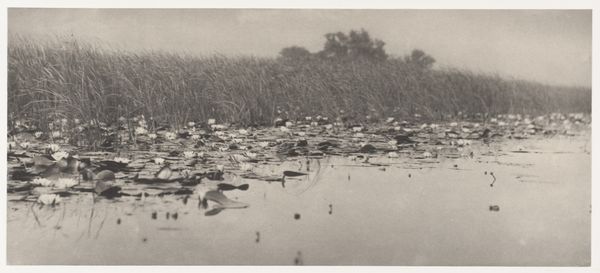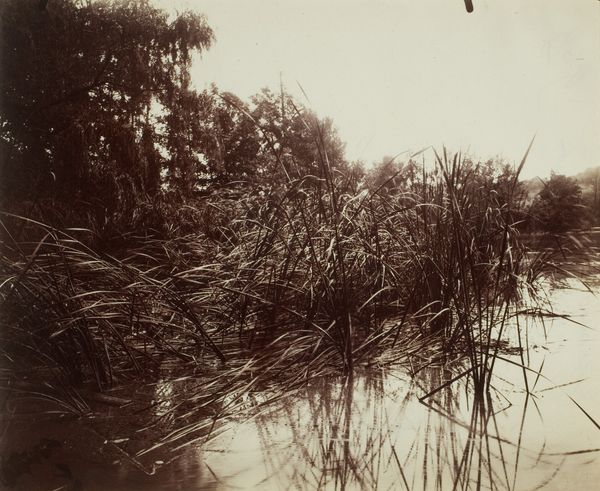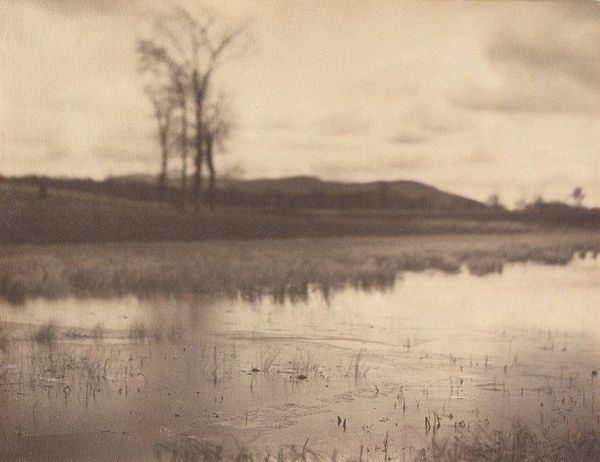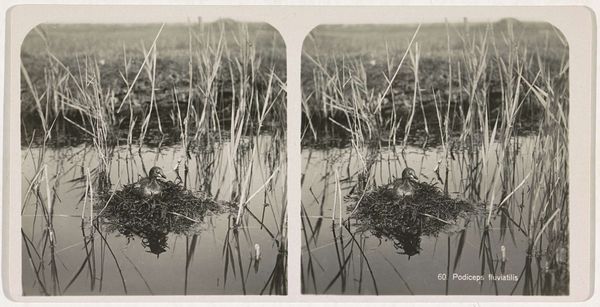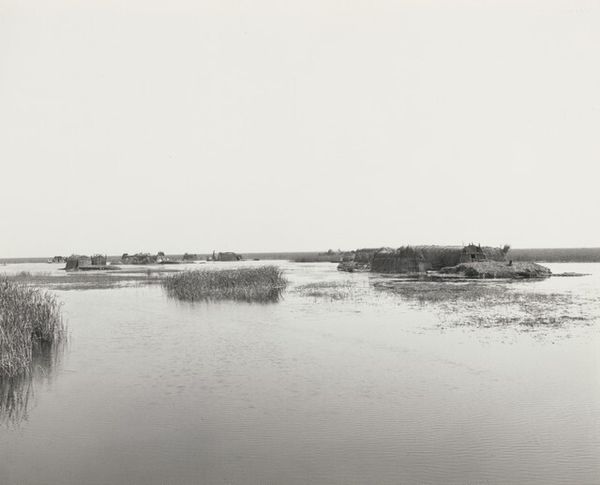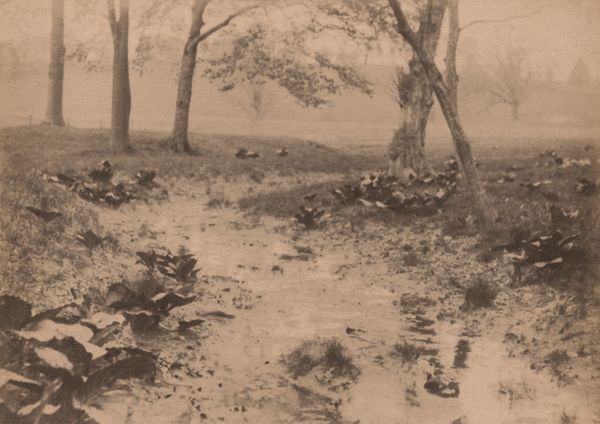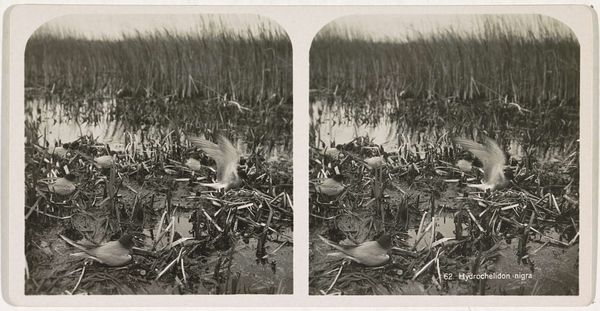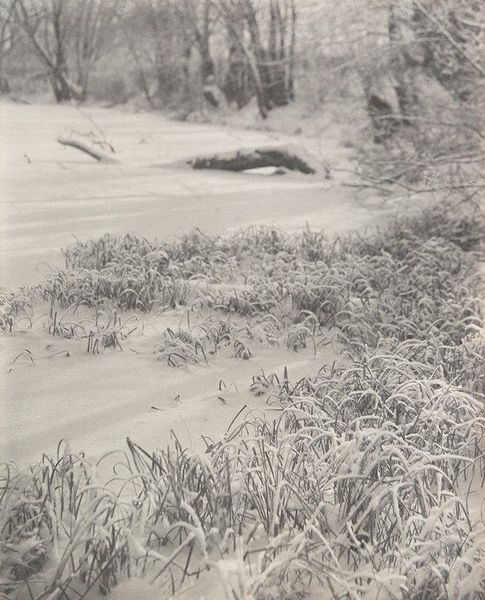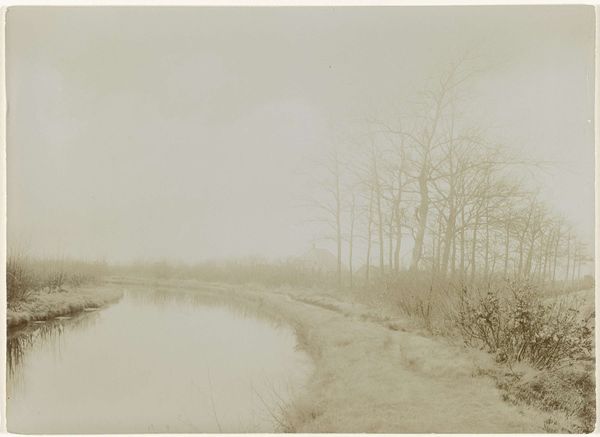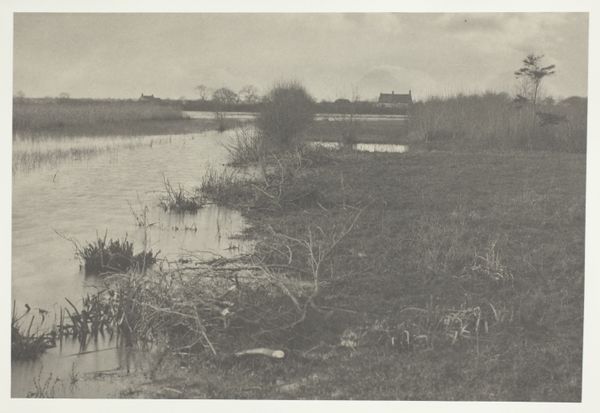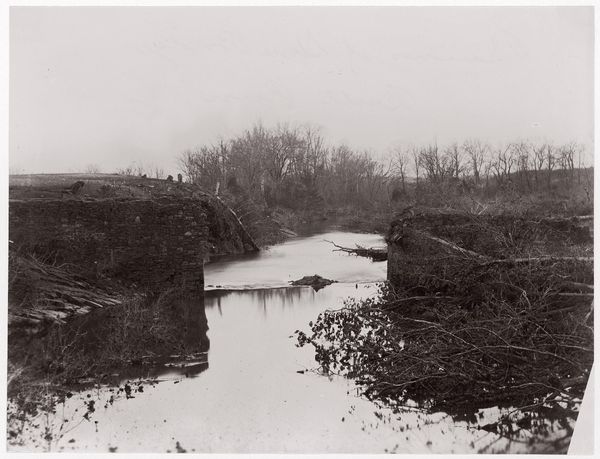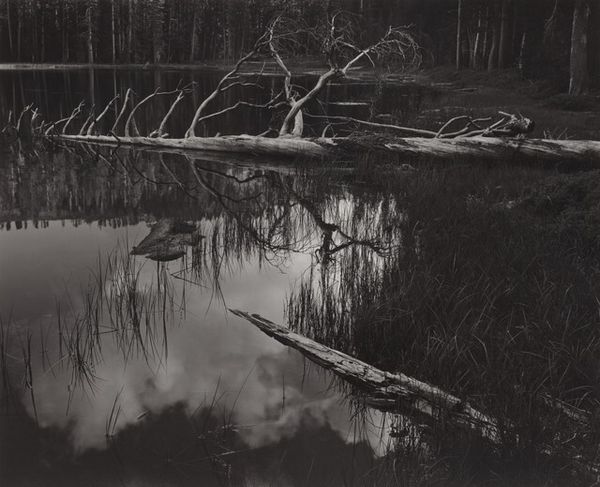
#
vast and haze
#
natural shape and form
#
snowscape
#
countryside
#
england
#
monochrome photography
#
gloomy
#
fog
#
murky
#
mist
#
shadow overcast
Dimensions: 4 7/8 x 11 in. (12.38 x 27.94 cm) (image)11 1/2 x 16 3/16 in. (29.21 x 41.12 cm) (sheet)
Copyright: Public Domain
Editor: So, this is Peter Henry Emerson's "Water-Lilies" from 1886, currently at the Minneapolis Institute of Art. It’s a photograph, a landscape, and I find its soft focus rather melancholic, almost as if capturing a fading memory. What do you see in this piece? Curator: The "melancholic" tone is an interesting point of departure. Think about the historical context: Emerson positioned himself in opposition to the prevailing photographic aesthetic of his time. While others strived for sharp, detailed images emulating painting, Emerson embraced what he called "naturalistic photography." But "natural" for whom? Who had access to this countryside, and whose stories are missing? Editor: So you’re saying the choice of representing “nature” is not apolitical? Curator: Precisely! Consider the late 19th century—the rise of industrialization, urbanization, and anxieties around class and social mobility. Emerson's idyllic scenes of the English countryside become a powerful commentary, perhaps even a critique of these societal shifts. His soft focus evokes a sense of longing for a pre-industrial past, a world that, in reality, was likely romanticized and inaccessible to many. It invites questions around land ownership, labor, and the selective representation of rural life. Does the “soft focus” aesthetic soften class disparities? Editor: I hadn't considered the socio-economic context. I was simply thinking about it aesthetically, but framing it within that lens offers a much richer interpretation. Curator: Exactly. How does the photograph speak to Victorian England's yearning for an idealized countryside while obscuring the complexities of rural life and labor? Think about it – who benefits from this romantic vision of the land? Editor: Wow, that’s given me so much to consider, far beyond just the visual aspects. Curator: Absolutely. It reveals how aesthetic choices can be deeply intertwined with social and political ideologies, even in something as seemingly straightforward as a landscape photograph.
Comments
No comments
Be the first to comment and join the conversation on the ultimate creative platform.
